The mountain village of Syrrako in Greece is a hidden gem that travellers must discover.
Gavin is an Australian living on the Greek island of Syros, which is the capital of the well-known Cyclades group and includes several small islands like Mykonos, Santorini, Paros, and more.
He shares an amazing road trip to the 15th-century traditional mountain village of Syrrako, in the Epirus region of North-Western Greece – a steep jig jagging road through alpine-like dense forests of pines, conifers, and fir trees. For those who only associate Greece with Athens and the islands, this is a must-see alternative.
Transfixed by a black and white photo
I first heard about the wondrous mountain village of Syrrako some 18 years ago, when I was transfixed by a mysterious black and white photo hanging on the wall of Captain Jim (retired Greek Navy Commodore) and Lucy’s lovely home on the Greek island of Syros.
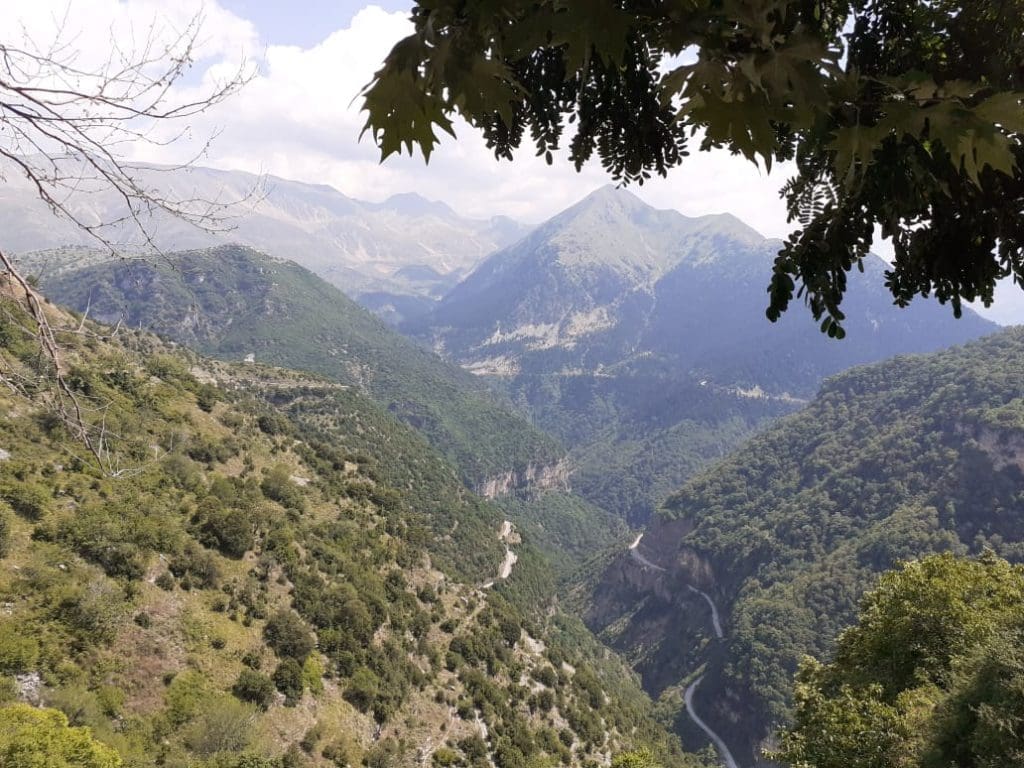
The picture shows a deep rugged mountain gorge enveloped and shrouded in heavy low cloud cover, with the faint outline of stone cottages in an extremely remote and isolated village in Epirus, the north-west corner of Greece.
The Captain explained that this was the home of his ancestors and family, his father having been a General in the Greek Army in World War 2, and his uncle Konstantinos Krystallis a famous poet in the late 19th century.
It was also the home village of Greece’s first Constitutional Prime Minister, Ioannis Kolettis. (1774 – 1847) The allure of this extremely isolated and remote stone village, perched on the side of a mountain at an altitude of some 1,200 metres close to the Albanian border, never left me!
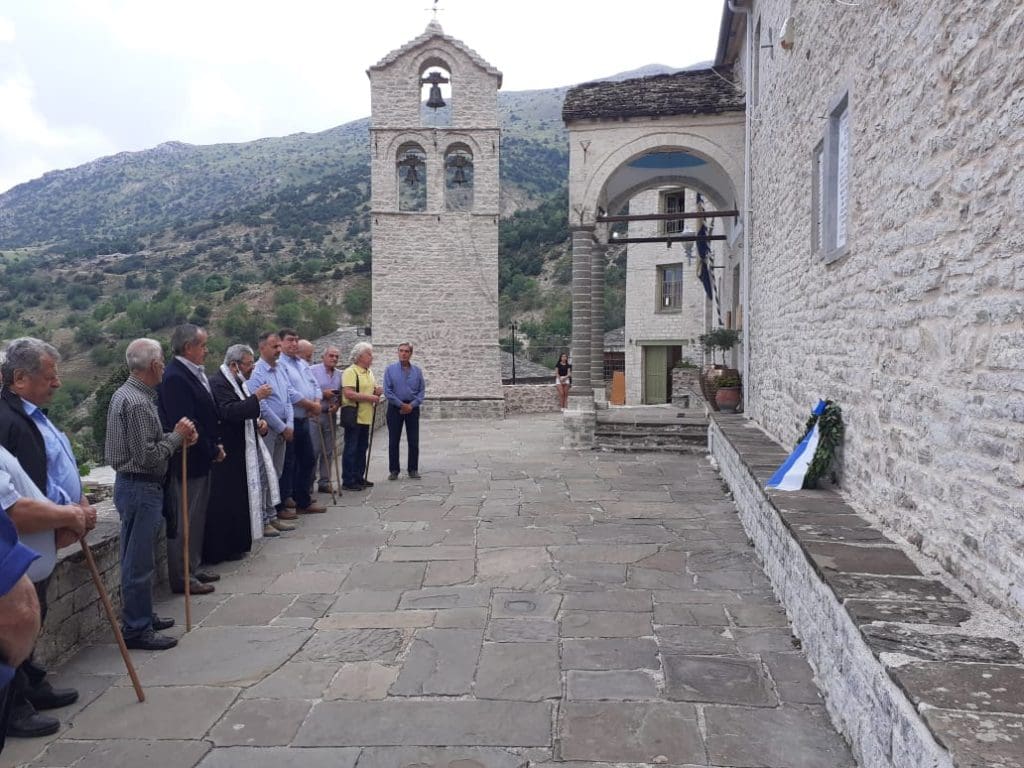
Over the ensuring 18 odd years, we often romanticised over a glass or three of Tsipouro (a traditional Greek strong distilled spirit) about a road trip “up the mountain”. And so the day finally arrived in August 2020, when our two-car convoy left on a warm summer morning.
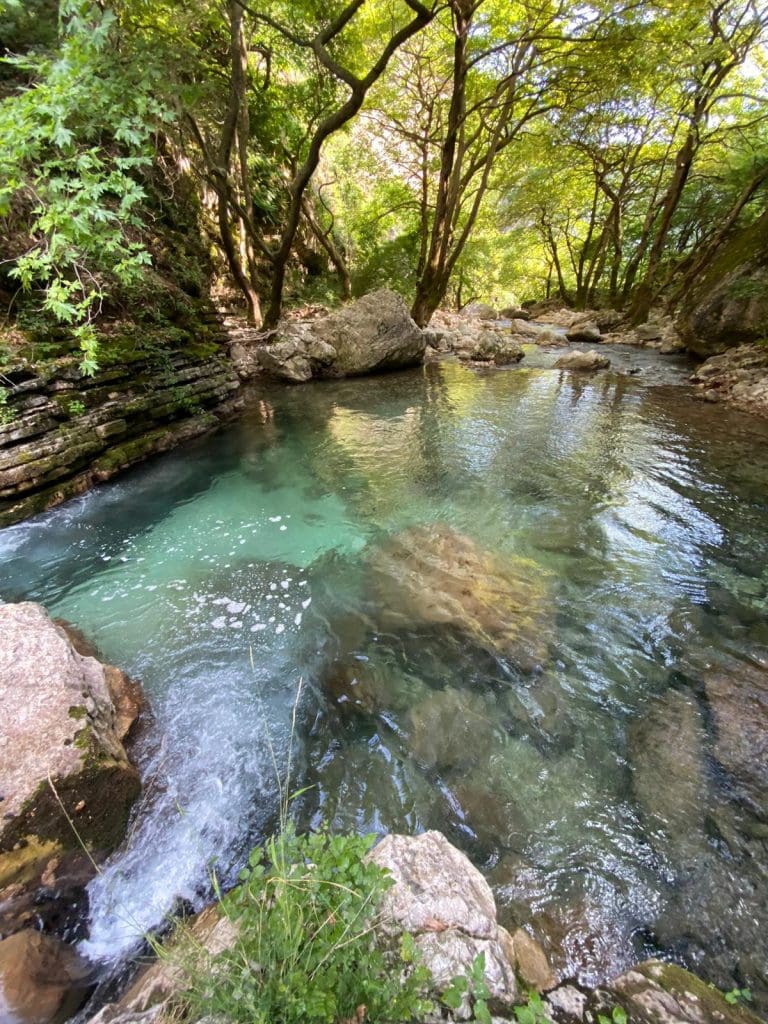
A 7-hour journey of 450 km
Our 7-hour journey of 450 km was to take us from the leafy Athens suburb of Vrillisia, in a North-West direction up the modern motorway of Attiki Odos. Modern Greece offers the best of dual carriage motorways and this one has stunning water vistas with the backdrop of distant mountains.
Our first stop was at the Corinth Canal, for a coffee break, but ostensibly to marvel at this amazing piece of late 19th-century engineering. In its day this was a masterpiece of human endeavour…. it runs for a length of over 6 km, has a wall height of approx 100 metres above the water level, and a width of 21 metres at its base.
Because of this man-made canal, it can be argued that the wonderful Peloponesse peninsula is now also a Greek island! The famous canal connects the Saronic Gulf in the Aegean Sea with the Gulf of Corinth in the Ionian Sea, and saves days of sea travel around the Peloponnese peninsula.
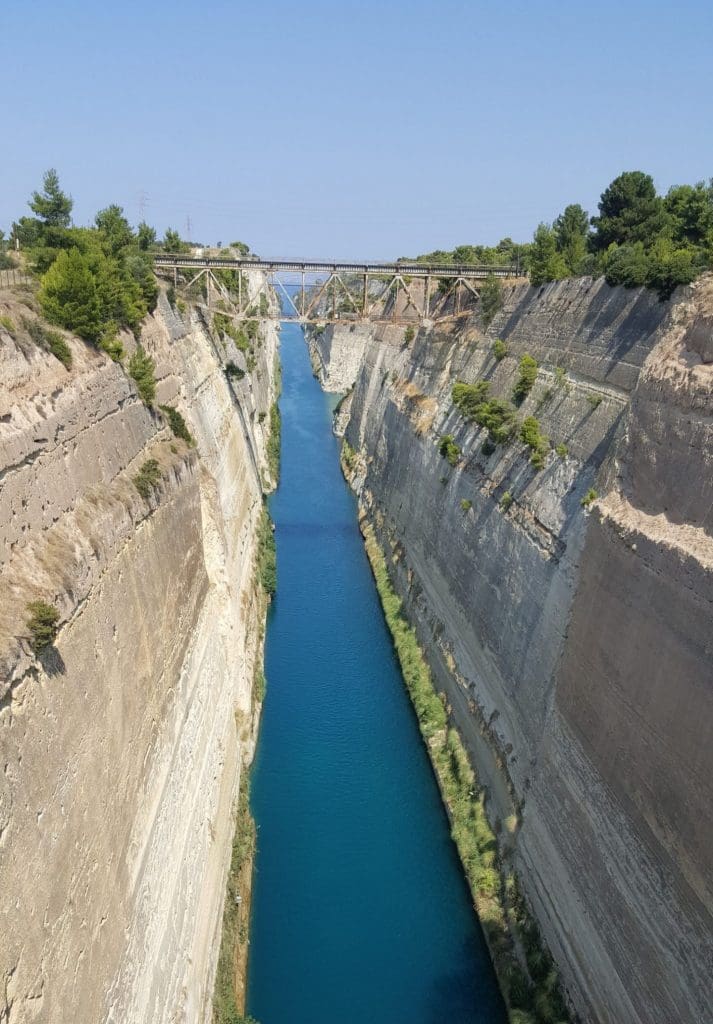
From the Corinth Canal, we drove along the Olympia Odos motorway on the southern side of the Gulf of Corinth for approx 100 km, to the spectacular modern Rio bridge. This stunning modern structure takes you north over the entrance of the Gulf, near the major port of Patras.
Yet another amazing tribute to the Greeks engineering abilities, it is widely considered to be a structural masterpiece. It spans over 2 km across the Gulf, linking the town of Rio on the Peloponnese Peninsula with Andirrio on the mainland.
Technically it is one of the world’s longest multi-span cable-stayed bridges and the longest of the fully suspended type. It opened in 2004 one day before the start of the 2004 Athens Olympics. It carries over 11,000 vehicles per day generating in excess of 80 million euros per annum for the Greek economy.
From there the Ionian Odos motorway took us north up the west coast of Greece, parallel with and some 50 km from the Ionian Sea.
Our second stop in the early afternoon was for lunch at the charming seaside village of Menidi, on the Ambracian Gulf. Some of us swam in the warm gulf waters and all ate the local fresh grilled seafood, washed down with a carafe or three of the local krasi (wine).
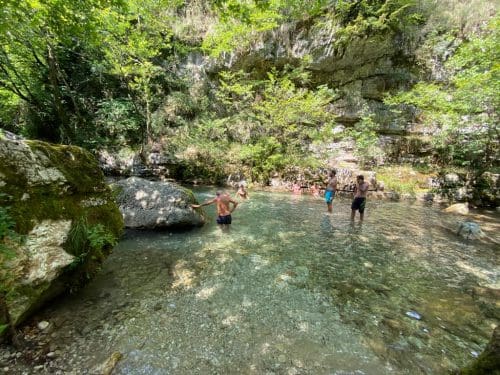
Our enthusiastic waiter Yorgos assured us that the fish leapt from the sea onto our plates (via his kitchen) at the exact time we arrived! He ensured that this was the quintessential Greek experience at its best… eating and drinking at a Taverna on a warm summers day, just meters from the sea under the shade of an old Tamarisk tree!
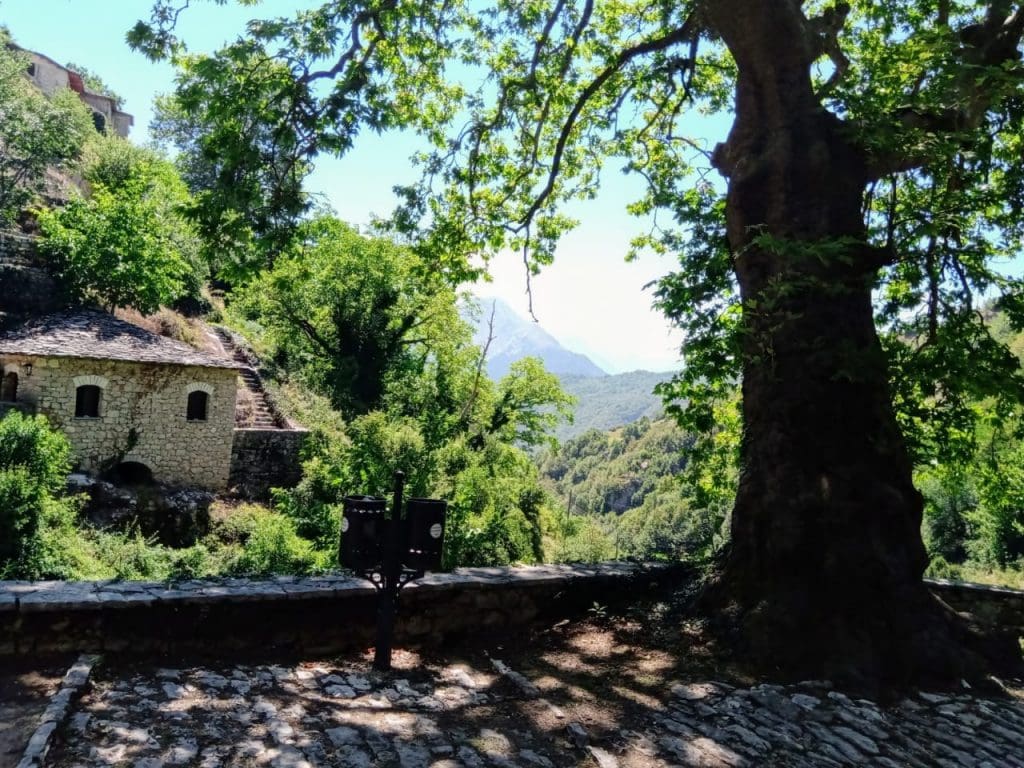
On the winding and picturesque side road into and out of Menidi, we noticed numerous trucks and lorries. The Captain explained that the drivers took this circuitous route of approx 50 km to avoid the heavy tolls on the main motorway, which we had begrudgingly noticed occurred every 20 km or so.
Our toll fees per car were approx 35 euros for the duration of the days driving, a small price to pay however for the privilege of such a unique experience.
It was another 50 km north near and before Ioannina, that we left the motorway and coastal plain and headed inland east to begin the hour-long ascent, up up up to our planned destination of Syrrako.
This is an amazing drive… a steep jig jagging road thru alpine-like dense forests of pines, conifers and fir trees. So green and lush the likes of which I had never experienced before in Greece. For those who only associate Greece with Athens and the islands this is a must-see alternative.
Only some 50 km from the Albanian border, this region of Epirus has had a long and tortuous past. The bitter three-year civil war that followed the end of the Second World War, between the Nationalists and Communists raged in this rugged, remote and isolated North-West corner of the country. The epic novel “Eleni” written by the well-known author Nicholas Gage was set in these astounding, but inhospitable mountains.
The road has in parts been carved out of the rocky mountainside and there was plenty of evidence (and signage) of dangerous rockfalls along the way.
For someone like myself who had only known Athens and the islands of the Aegean Sea in summer, this part of the country was a revelation. These mountains are covered with snow in winter and offer plentiful ski fields.
Even in the peak summer of August, we could see distant mountains capped with snow. Wild boar and bears roam these parts and hikers from all over the world traverse the numerous paths.
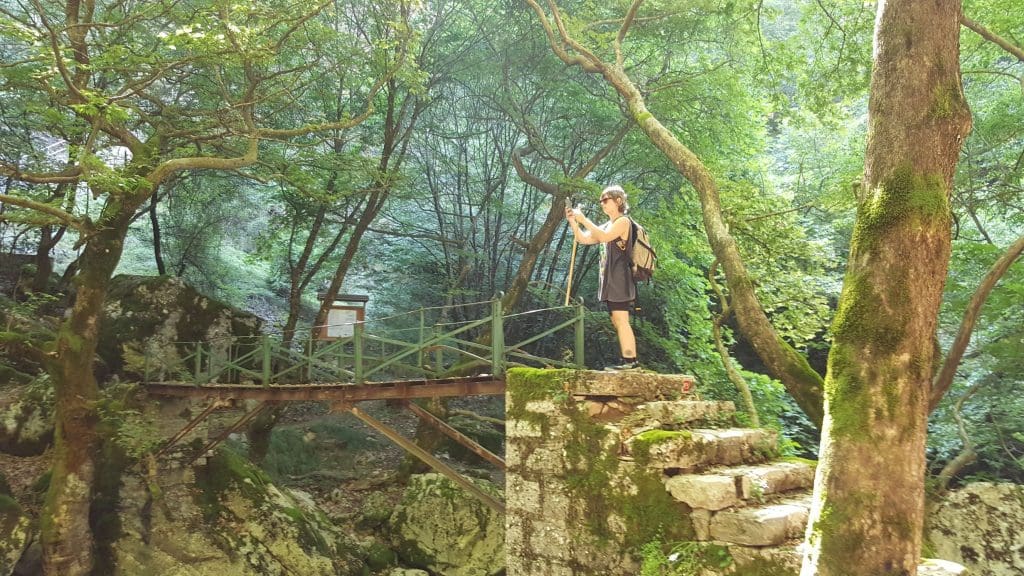
The world-renowned “Epirus Trail” meanders for approx 370 km thru this amazing countryside. Whilst still work in progress when completed it will offer approx 450 km of hiking trails, certainly the longest single trail in Greece and one of the largest in Europe.
Greece is one of the leaders in “rambling tourism” across Europe
This trail identifies Greece as one of the leaders in “rambling tourism” across Europe, promoting in this unique way the outstanding natural beauty and cultural heritage of Epirus. It is arguably the most intriguing and spectacular region of Greece.
It was at dusk that we rounded the last of what seemed a never-ending series of bends, to lay eyes on our destination… the wonderful 15th-century village of Syrrako. It was visually more startling than I had expected and even better than the Captain’s black and white photo hanging on his wall back home in Syros.
Like the photo, however, it appeared to hang onto the side of the mountain, as if not man-made at all but just a natural phenomenon. There is a sense of all-pervading nostalgia here that this village has endured over six centuries in such an isolated pristine corner of the world.
Tired but emotionally charged we booked into our splendid authentic boutique hotel and readied ourselves for the evening meal of traditional mountain cuisine and local wines. The air was so clear and cool and the outlook down the valley was simply stunning. It was a surreal experience in a sublime place.
Tomorrow promised to be yet another extraordinary day of exploring and adventure.
The mountains provide an even more amazing adventure
We woke to a stunning sunny day with temperatures forecast to be in the early 20s. A few hours were spent exploring the village’s narrow stony paths, and marvelling at the traditional stone architecture of the public and private buildings.
So old yet well preserved and functional. The village folks were welcoming, if not a little incredulous at these tourists who would journey so far up the mountain to admire their domain.
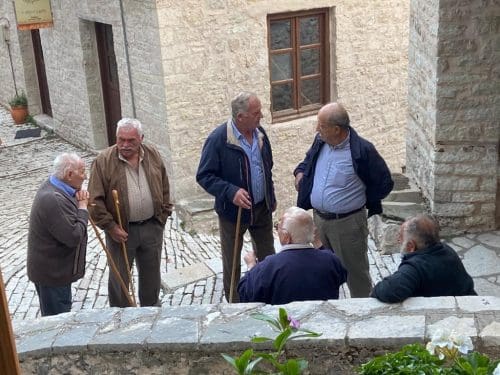
The men almost without exception held with great pride their “Glitzers”, the traditional mountaineering walking stick that we were told has numerous practical uses apart from its obvious aesthetic appeal.
It is made from a local shrub’s thin trunk (approx 3 cms thick and 140 cms in length) that is extremely durable and ideal for its intended use.
Whilst the previous day’s 7-hour road trip up the mountain from Athens had been an incredible experience in itself, the mountains that we were now captives of were to provide an even more amazing adventure!
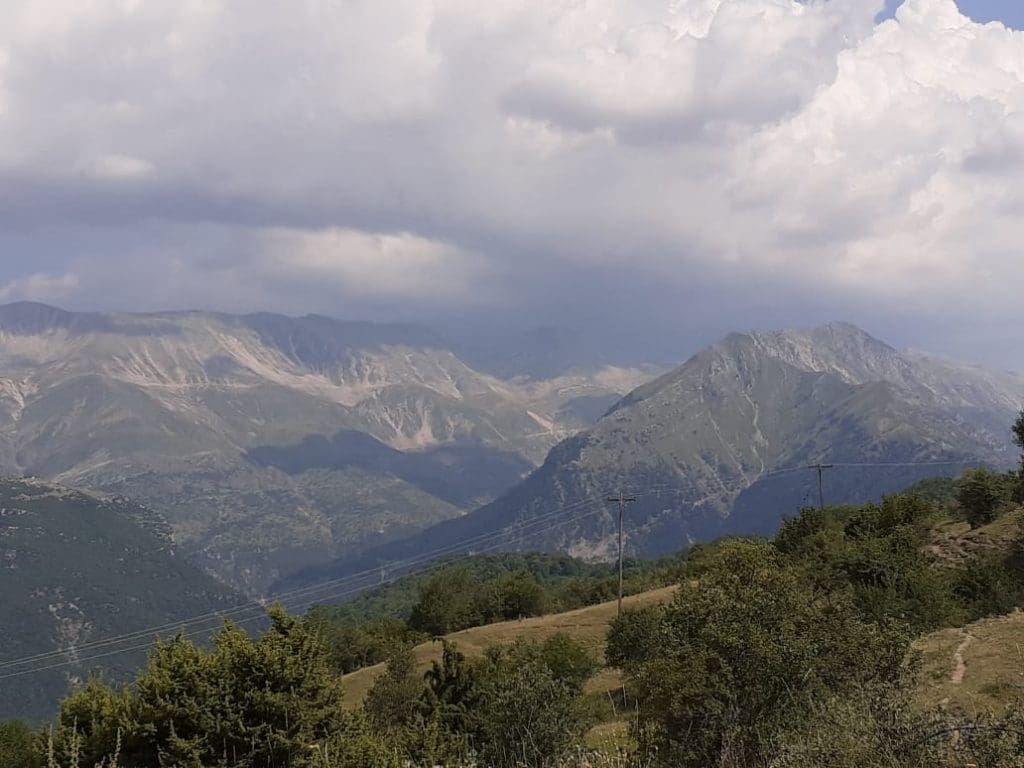
A 7-hour hiking trek along a section of the Epirus Trail
Anna, the Captain’s daughter is an avid hiker with a strong affinity for these mountains and the family’s historical ties. She had mapped out our day’s adventure… a 7-hour hiking trek along a section of the Epirus Trail that would take us from Syrrako on a circuitous route, down to and across the flowing mountain stream at the bottom of the 200 metre deep valley gorge, to the far side of the mountain.
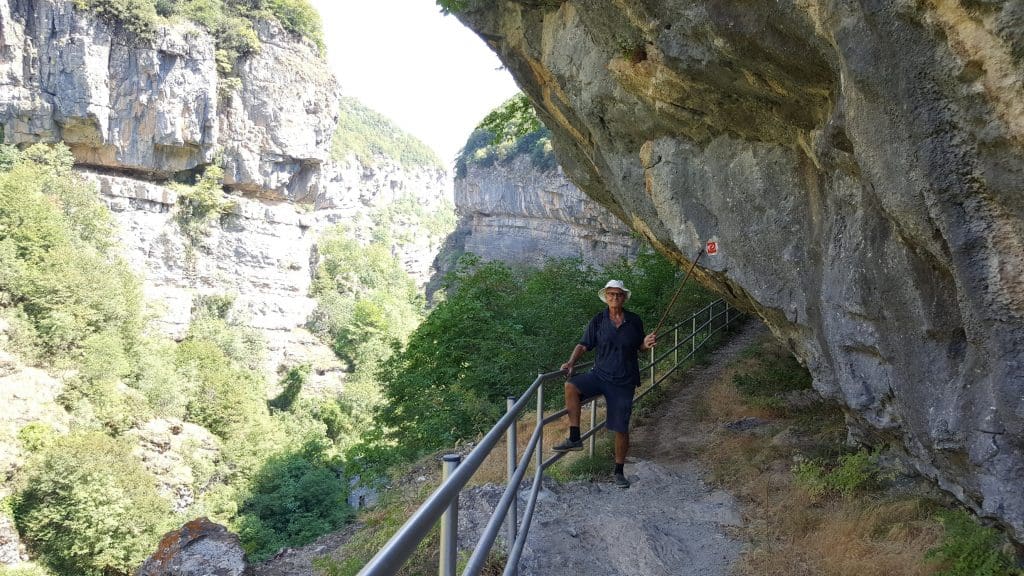
On the valley floor beside the stream, the blue sky was not to be seen. The air was cool dense and moist with the scent of pure nature. From there we followed the narrow winding track up and then along the edge of the far side of the valley to the neighbouring village of Kalarrites, a distance of some 5 km.
The scenery was breathtaking down and along the valley. The path itself (partly man-made and partly a natural track) was vertically challenging and dangerous in parts. It is etched into the side of the steep rocky mountain at least 100 metres above the valley floor and its pristine stream.
There were sections where we were actually underneath the overhanging mountainside. The flora is dense and green from the year-round rainfall and winter snow.
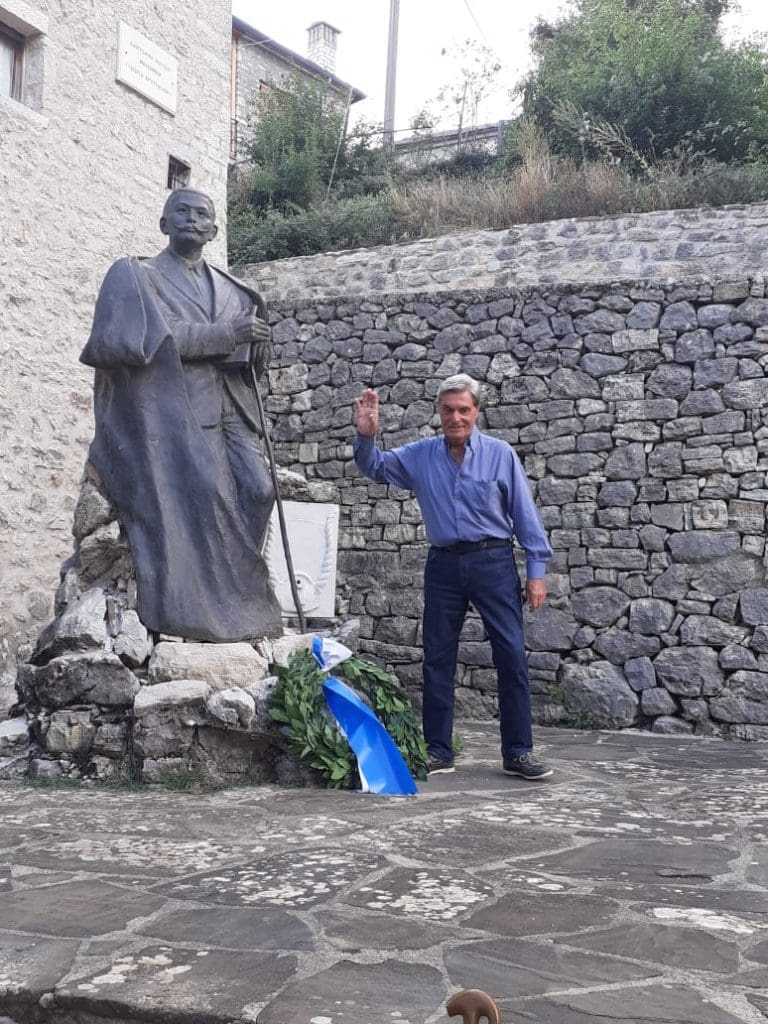
We reached the equally quaint but smaller village of Kalarrites after two hours of arduous trekking where we joined the Captain and Karrie who had arrived by car, for a very welcome lunch break.
The 4-hour trek back to Syrakko was even more physically challenging. It took us back down to and across the valley floor and mountain stream. It was then a slow gradual zig-zagging 700-metre high climb thru dense undergrowth to the main road. At the stream, we stopped for a swim at an old mill dam pond.
The freshwater was unbearably cold being in the constant year-round shade under a canopy of trees. It was of course the product of melting snow in the distant mountains and provided the exhilaration that we sought.
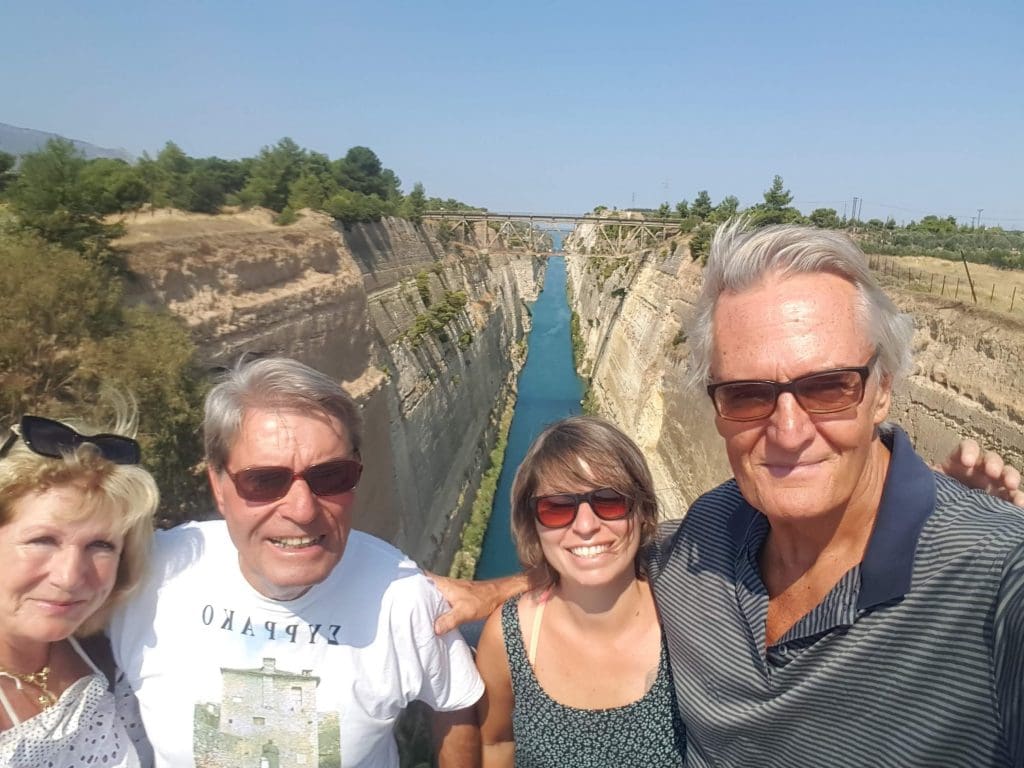
Once on the main road that led gradually back down to Syrrako, we were able to see the whole mountainside in perspective. The two man-made stone villages were acting as bookends to each end of the valley.
We staggered triumphantly back into the village at dusk and enjoyed an icy cold Alpha beer at one of the few small local tavernas. From our outside table, we were able to look back, down, and across the mountain gorge that we had just traversed, with great satisfaction. It had been another amazing and fulfilling day’s adventure!
More about the destination- Syrakko
Syrakko is one of the most beautiful and picturesque villages in the Epirus Prefecture and all of Greece. It is declared to be a traditional settlement, a model of traditional architecture with stone houses, cobbled streets, churches, stone foundations, and public buildings.
It was the traditional home of the Kutsovlach nomadic shepherds, (Greek Aromanians or Vlach speakers) in the 1400s.
Syrrako was inhabited before the 15th century, possibly as early as the 11th century by the Aromanians (Vlachs), an Ethnic group native to Epirus and other parts of northern Greece. Evidence of this includes the age of the Plane Trees in the village square.
It is some 450 km from Athens, 52 km southeast of the regional Epirus capital of Ioannina, and approx 50 km from the Albanian border. It sits at an altitude of 1,200 metres on the mountain of Peristeri.
Travel details:
For those who would prefer a quicker journey to Syrrako, Sky Express (the Greek local airline) fly almost daily from Athens to Ioannina (approx 1-hour flight). The return fare is approx 80 euros in the offseason, but cheaper deals may be available in these difficult Covid times.
Ioannina has an International Airport with incoming flights from various parts of Europe and the UK.
The 52 km road trip from Ioannina to Syrrako can only be taken by car. There are numerous car hire firms offering attractive deals from the airport.
For your accommodation in Syrrako, I strongly recommend the delightful boutique Hotel Stavraetos, a traditional 8-room hotel situated in the centre of the village.
Read more: Blog



